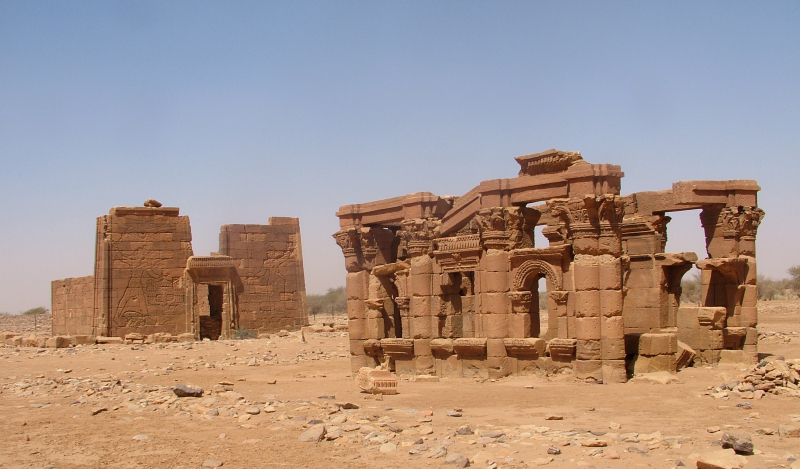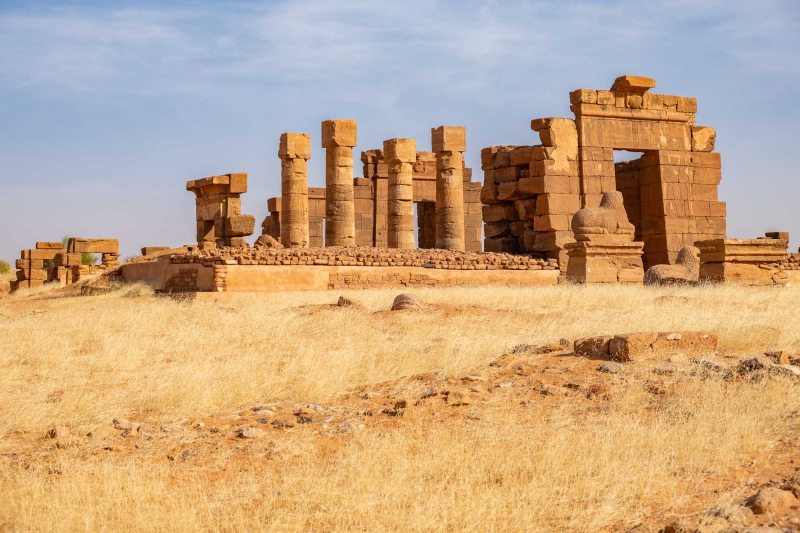Naqa
Naqa or Naga'a is a ruined ancient city in modern-day Sudan of the Kushitic Kingdom of Mero. The ancient city is located approximately 170 kilometers northeast of Khartoum and approximately 50 kilometers east of the Nile River. Smaller wadis meet the Wadi Awateib, which flows from the Butana plateau region's center, and farther north at Wad ban Naqa, where it joins the Nile.
Naqa is one of the country's largest ruined ruins, indicating that a significant ancient metropolis once thrived in the area. It was one of the centers of the Kingdom of Mero, which acted as a link between the Mediterranean and African worlds. The site is famous for two temples, one dedicated to Amun and the other to Apedemak, both of which have a Roman kiosk nearby. It is known as the Island of Meroe, along with Mero and Musawwarat es-Sufra, and was designated a UNESCO World Heritage Site in 2011.
Naqa is home to a number of Meroitic temples spanning from the fourth century BC to the fourth century AD. The remnants of several temples have been discovered, but the Amun and Apedemak temples, also known as the Temple of the Lion, are the two largest and most notable temples of Naqa. Both are still in good condition. King Natakamani erected the Amun temple of Naqa, which is 100 meters long and has various statues of the king. The temple has an east-west axis and is composed of sandstone that has been somewhat worn by the wind. The temple is built in Egyptian architecture, with an outside court and ram colonnade reminiscent of the Temple of Amun at Jebel Barkal and Karnak, leading to a hypostyle hall enclosing the interior sanctuary. Relief carvings may be found on the temple's main entrances and walls.
In 1999, a German-Polish archaeology team investigated the temple's interior sanctuary. The stela's reverse and sides feature undeciphered Meroitic hieroglyphs and are regarded as one of the best examples of Meroitic art discovered to date by the finding team. After more than a decade of excavation, restoration, and measuring of the Amun Temple, the Sudanese government reclaimed control on December 1, 2006, delegating the duty to the Ministry of Culture.
Another Amun temple, Naqa 200, has been excavated since 2004 on the slope of the neighboring Gebel Naqa, the mountain overlooking the Naqa village. It was erected by Amanikhareqerem and is similar to the Temple of Natakamani. It was erected by Amanikhareqerem and is similar to the Temple of Natakamani. It is dated to the 2nd or 3rd century AD, though some artifacts do not conform to the precise dating, further complicating Nubian chronology.
The temple of Apedemak is located to the west of the Amun temple (or the Lion Temple). Apedemak was a Nubian warrior god with a lion's head. The god served as the deceased hereditary chief, prince, or king's sacred guardian. This Apedemak was thought to curse anyone who touched the chief's grave. The temple is regarded as a model of Kushite architecture. The temple's front is a large doorway with Natakamani and Amanitore on the left and right wielding divine power over their inmates, metaphorically with lions at their feet. Although it is unclear who the prisoners are, historical records show that the Kushites frequently clashed with invading desert clans. Fine images of Apedemak, who is symbolized as a snake emerging from a lotus flower, may be found around the margins. On the sidewalls of the temple are images of the gods Amun, Horus, and Apedemak keeping the king company.
The Roman kiosk is a tiny temple adjoining the larger temple building with Hellenistic influences. The entrance to the kiosk is Egyptian, with a lintel topped by a row of the sacred uraeus (cobras), but the sides are Roman, with columns with florid Corinthian capitals and arched windows. Recent excavations at the site revealed that it was most likely dedicated to Hathor worship. The goddess Isis was known to have absorbed some characteristics of Hathor.
Location: Naqa, River Nile, Sudan








